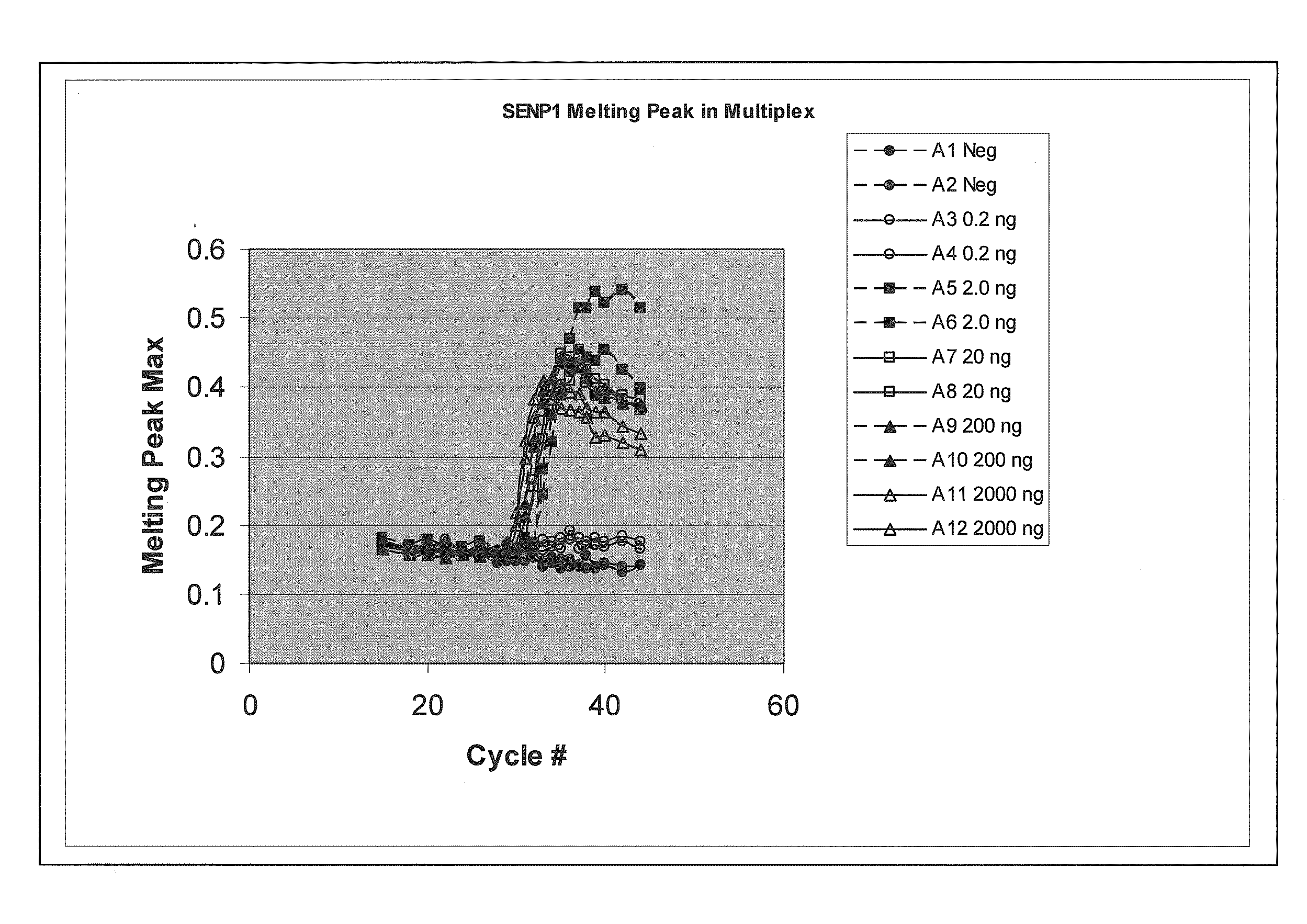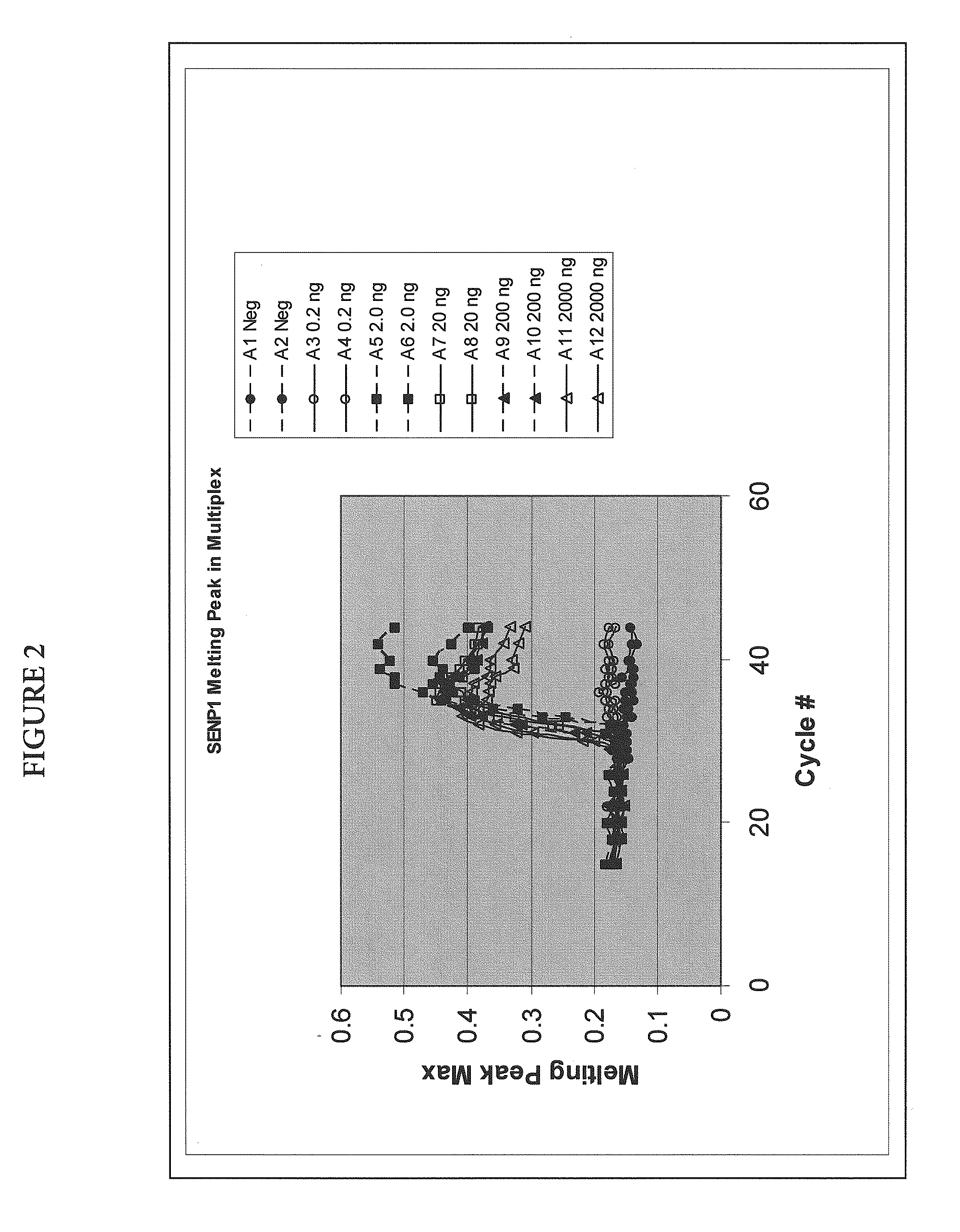Multiplex Quantitative Nucleic Acid Amplification and Melting Assay
a nucleic acid amplification and multi-quantitative technology, applied in the field of single-tube multiplex assay, can solve the problems of limited detection instruments, inability to multiplex an assay, and inability to detect more than four separate wavelengths in the same reaction vessel
- Summary
- Abstract
- Description
- Claims
- Application Information
AI Technical Summary
Benefits of technology
Problems solved by technology
Method used
Image
Examples
example 1
[0060]Quantitative amplification of various amounts of targets SENP1 and PPP1CA in the same tube, using melt-based growth curves.
[0061]In this example, the method was applied to the detection and quantification of various amounts of SENP1 and PPP1CA RNA in a tissue sample.
[0062]The asymmetric PCR was conducted with a seven-fold excess of the excess primer over the limiting primer. The detection was performed with a single hybridization probe labeled with a fluorescein dye and a BlackHole™ quencher. The primer and probe sequences are shown in Table 1. The probes were designed to hybridize to the excess strand.
TABLE 1Primers and probes used in the examplesSequence IDFunctionSequence 5′-3′SEQ ID NO: 1ForwardCAGCTTCAAATACACAATCTGAAGGAprimer forTCASENP1SEQ ID NO: 2ReverseTGCCTGGAAGAAAGTAGAACTGGGAprimer forSENP1SEQ ID NO: 3Probe forFGACTCTGTGATTTTACTGAAAGTGASENP1AAGATTCCCAGACTCCQpSEQ ID NO: 4ForwardAACCGCATATATGGTTTCTACGATGEprimer forPPP1CASEQ ID NO: 5ReverseCGATGAGTGCAAGAGACGCTACAEprimer...
PUM
| Property | Measurement | Unit |
|---|---|---|
| temperature | aaaaa | aaaaa |
| temperature | aaaaa | aaaaa |
| melting temperature | aaaaa | aaaaa |
Abstract
Description
Claims
Application Information
 Login to View More
Login to View More - R&D
- Intellectual Property
- Life Sciences
- Materials
- Tech Scout
- Unparalleled Data Quality
- Higher Quality Content
- 60% Fewer Hallucinations
Browse by: Latest US Patents, China's latest patents, Technical Efficacy Thesaurus, Application Domain, Technology Topic, Popular Technical Reports.
© 2025 PatSnap. All rights reserved.Legal|Privacy policy|Modern Slavery Act Transparency Statement|Sitemap|About US| Contact US: help@patsnap.com



